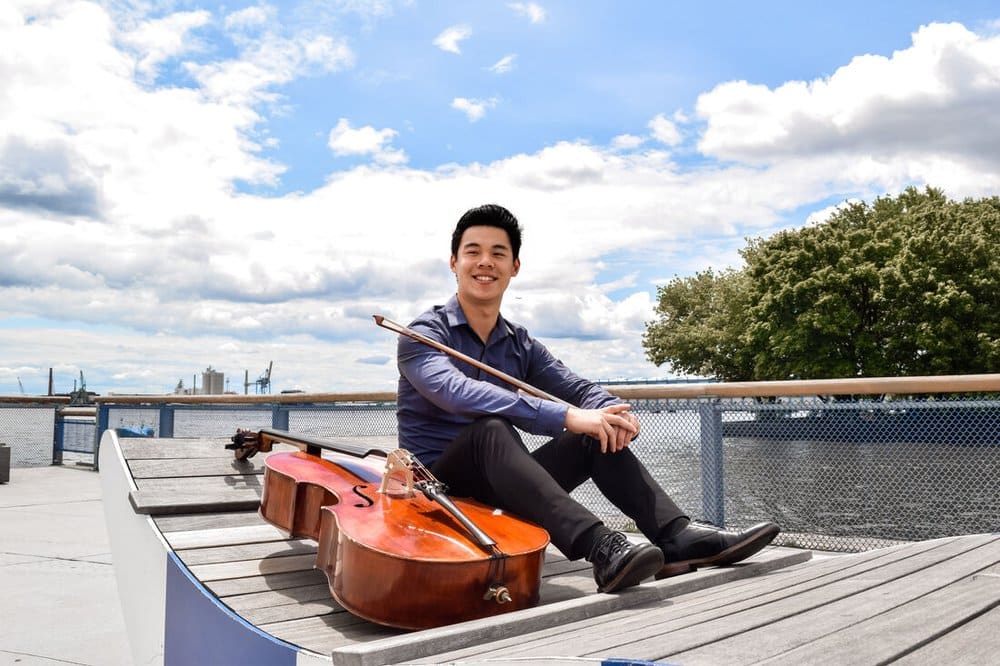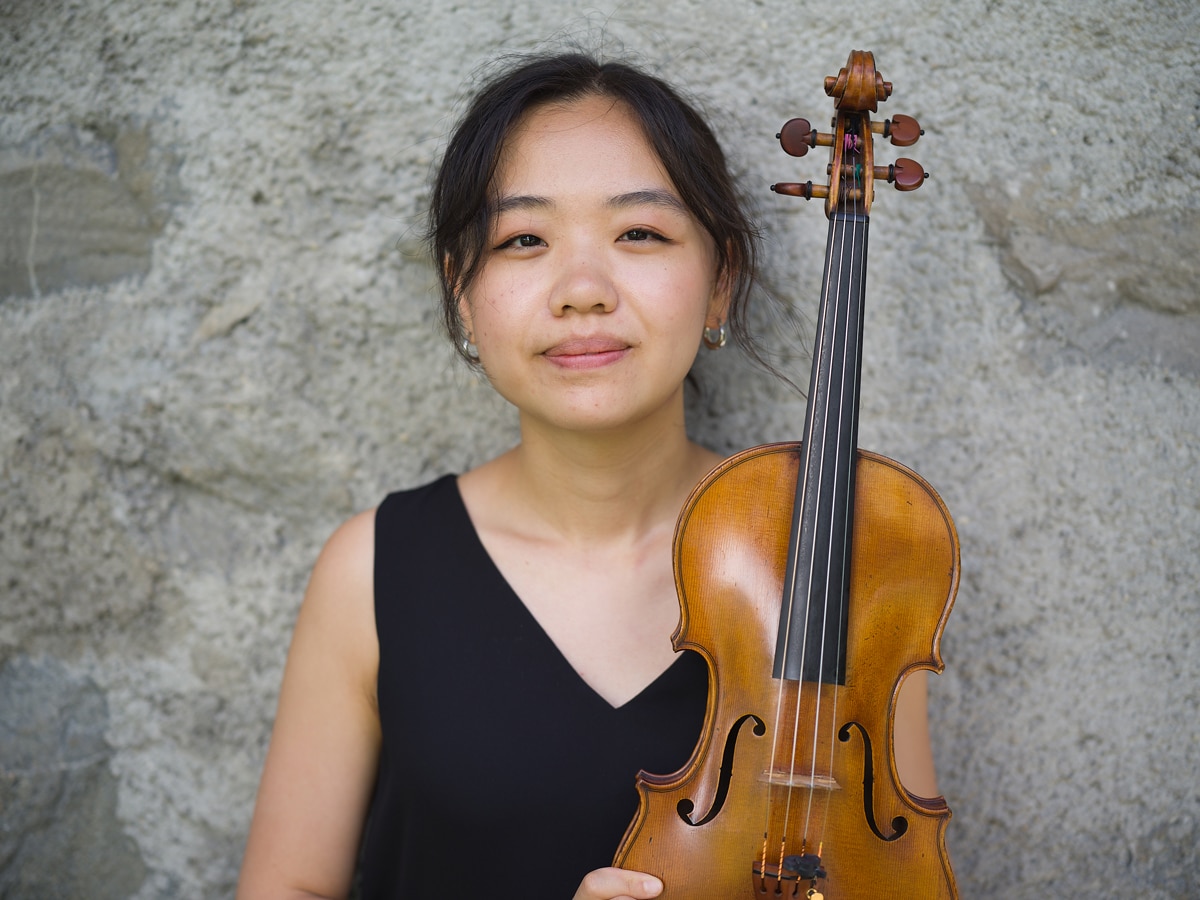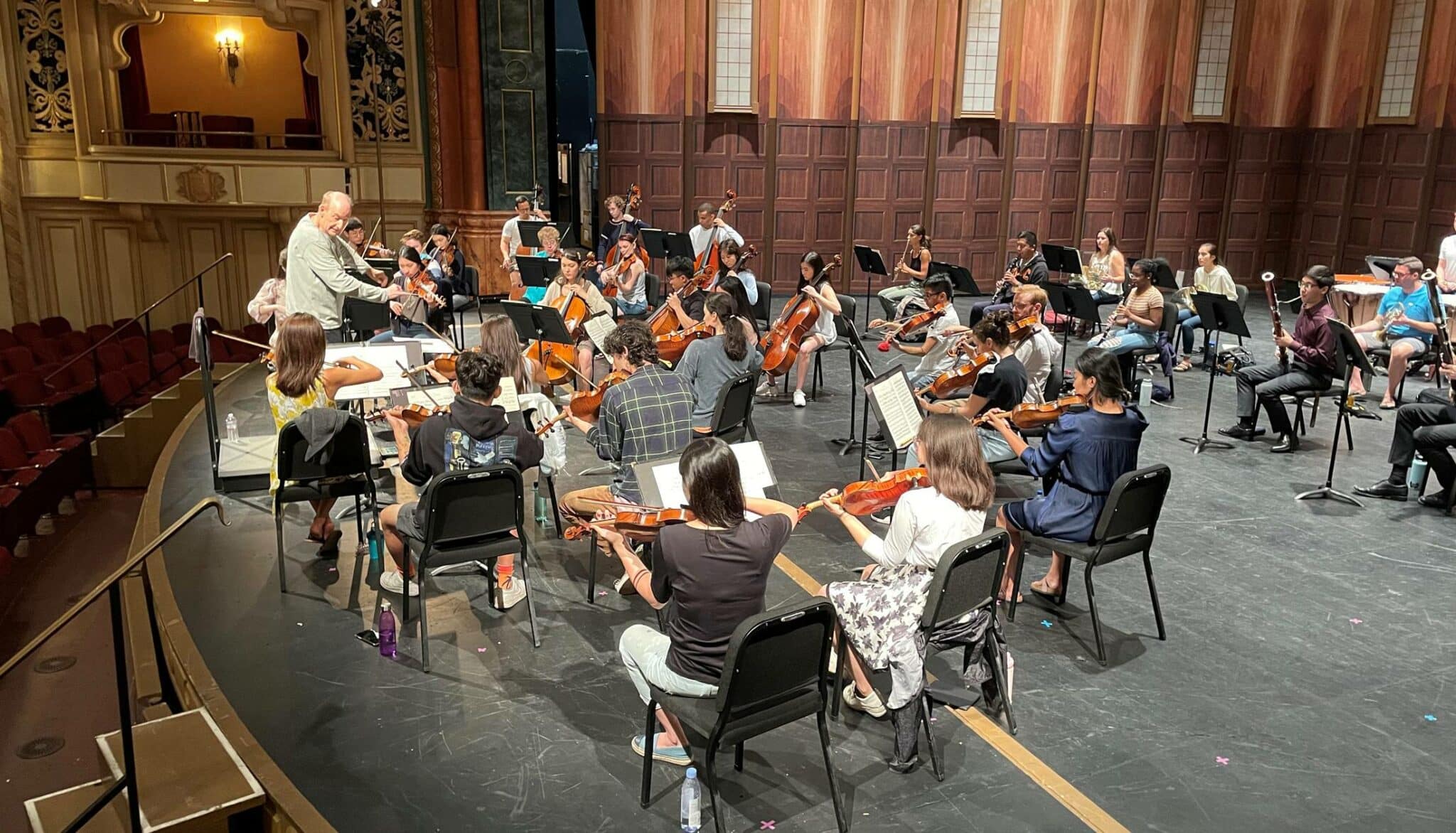Wolfgang Mozart’s Symphony No. 39 in E-flat Major, K. 543 will be featured on the Academy Chamber Orchestra’s Welcome Concert with Larry Rachleff at the Granada Theatre this Sunday, July 11 at 2 pm. Get your tickets now to this exciting concert, where in addition to Symphony 39, you’ll also hear Katy Abbott’s Punch and Igor Stravinsky’s Firebird Suite.
BUY TICKETS
This guest post/program note comes courtesy of the Music Academy’s partnership with the UC Santa Barbara Department of Music, a key part of Project Resonance, a unique program combining writing training with public engagement. Through this initiative, both Academy fellows and young scholars from UCSB are given the opportunity to work on program notes and other written materials for the Summer Festival.
***
From its very first moments—a regal fanfare that transitions into a breezy, extroverted romp—one could easily imagine that Wolfgang Mozart wrote his Symphony No. 39 during a time of great joy. This was not the case, however. The summer of 1788 was an extraordinarily dark time in Mozart’s life, rife with both personal and professional challenges. While he had enjoyed notable success in Vienna for several years, times were changing. The Viennese public was quickly losing interest in the talents of the young composer-pianist from Salzburg, which was confirmed when the first local performances of Don Giovanni in May 1788 failed to capture the city’s imagination.
The situation was exacerbated when the Holy Roman Emperor, Joseph II, declared war on Turkey in February of that year. Money was already tight, and the dwindling number of public performances put Mozart in more dire financial straits than usual. This led the composer to write a series of letters to his friend, the textile merchant Michael Puchberg, asking for money. Puchberg was happy to help—the two were members of the same Masonic lodge and mutual friends of Joseph Haydn—and he had trusted Mozart enough to lend him money several times in the past. However, Mozart’s summer 1788 letters to Puchberg strike a tone of desperation. An excerpt from one such letter reads as follows:
“My circumstances are such that I must absolutely get money. But, good God, in whom am I to put my trust? In no one but you, my best friend! If you would only be so kind as to get me the money through some other channel! I am quite willing to pay interest, and whoever lends it to me is, I think, secure enough by reason of my character and my salary…. If you, my most worthy brother, will not help me in my predicament, I shall lose honor and credit, which of all things I dearly wish to preserve.”
The letter was sent on June 27, 1788. Two days later, tragedy struck—Mozart’s six-month-old daughter, Theresia Constanzia, passed away. This was a devastating blow to the Mozart family. Only one of his four children had survived infancy thus far. Theresia had successfully lived past one and two months—when two of Mozart’s previous sons had passed away—giving both Mozart and his wife, Constanze, hope that Theresia would live to see childhood. Sadly, it was not to be.
These events occurred right after Mozart completed his Symphony No. 39, the manuscript of which is dated June 26. The work was written at a remarkable pace and was followed in quick succession by two more symphonies (Nos. 40 and 41) in July and August. Unusually, little to nothing is known about the symphony’s first performance. One of Mozart’s letters to Puchberg mentions a summer concert series at a brand-new casino in Vienna—and even enclosed a set of tickets for his friend—but no newspapers from the time refer to such an event. The prospects were either wishful thinking on Mozart’s part, or the concerts were canceled due to lack of public interest. Still, Mozart paid to have orchestra parts prepared in the city of Offenbach, a costly endeavor that suggests a performance of the work did take place at some point. Even then, details remain uncertain. Various sources report that some unidentified symphonies of Mozart’s were heard at several concerts in the years before his death in 1791. One of those very well could have been the Symphony No. 39, but this is pure speculation.
All mystery aside, the symphony brims with delights. From the jovial opening to the stately dance in the third movement, this is Mozart at his most carefree and charming. However, hints of darkness occasionally lurk at its corners. Brief thunderstorms interrupt the idyllic proceedings of the second movement, and the symphony as a whole—which culminates in a breathless final movement—seems to end with a question mark; triumphant, yes, but missing an added sense of finality. There is little evidence to support if Mozart foresaw the familial tragedy to come as he completed the work, but if he did, perhaps this symphony was his way of laughing through the tears.
– Kevin McBrien
PhD Candidate, Musicology, UC Santa Barbara
[big-cast]





